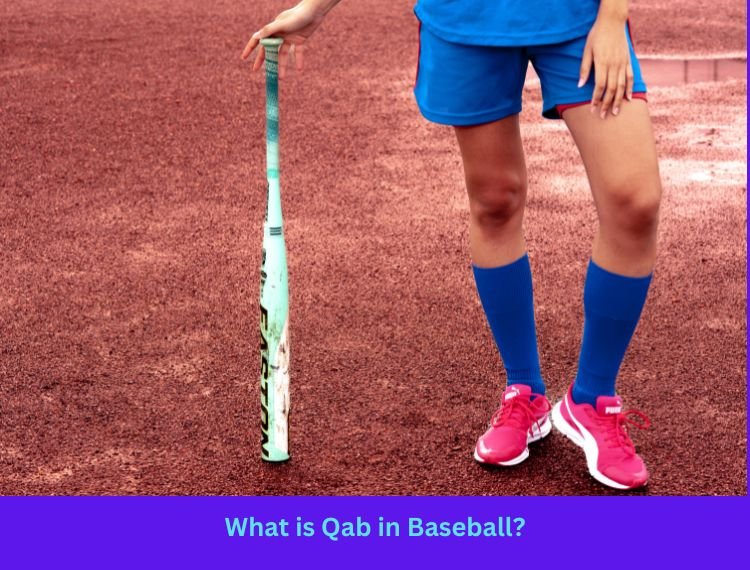QAB in baseball stands for “Quality At-Bats.” It measures a player’s effective at-bats that contribute positively to the team’s performance.
Quality At-Bats (QAB) is a key metric in baseball that evaluates a player’s effectiveness at the plate. It focuses on productive at-bats that benefit the team, such as walks, hits, or advancing runners. Coaches and analysts use QAB to assess a player’s performance beyond traditional stats like batting average.
This metric helps identify players who excel in crucial game situations. By focusing on QAB, teams can make better strategic decisions and enhance overall gameplay. Understanding QAB is essential for players aiming to improve their offensive contributions and for fans who want a deeper insight into the game.

History
Quality At-Bat (QAB) is a concept in baseball that measures a player’s ability to have productive at-bats. This metric focuses on the quality rather than just the outcome of each plate appearance. Understanding the history of QAB provides insights into how this concept developed and evolved.
Origin Of Qab
The concept of Quality At-Bat originated from the need to evaluate players beyond traditional statistics like batting average and home runs. Coaches and analysts wanted a way to measure how well a player contributed to the team’s success in each at-bat.
In the early days of baseball, metrics were limited to basic stats like hits, runs, and batting averages. As the game evolved, the limitations of these statistics became apparent. They didn’t capture the full picture of a player’s performance at the plate.
Key elements that contributed to the origin of QAB include:
Situational hitting: The ability to advance runners or score runs in crucial situations.
Plate discipline: The ability to draw walks and avoid swinging at bad pitches.
Pitch count: Making the pitcher throw more pitches, can tire them out.
Coaches began to track these elements informally and noticed that players who excelled in these areas contributed significantly to the team’s success. This led to the formalization of QAB as a metric in the late 20th century.
Evolution In Baseball
As baseball analytics evolved, so did the understanding and importance of QAB. The rise of sabermetrics in the late 20th and early 21st centuries played a crucial role in this evolution.
Sabermetrics introduced new ways to evaluate player performance. Analysts began to understand that traditional stats didn’t capture a player’s full contribution to the game. QAB became a popular metric because it provided a more comprehensive view of a player’s effectiveness at the plate.
Several factors contributed to the evolution of QAB in baseball:
Data availability: Advanced tracking systems provided more data on each at-bat.
Technology: Video analysis helped break down at-bats in more detail.
Coaching strategies: Coaches began to emphasize QAB in player development and game planning.
Today, QAB is an integral part of baseball analytics. Teams use it to evaluate players, develop strategies, and make in-game decisions. The evolution of QAB has changed how we understand and appreciate the game, highlighting the importance of each at-bat in contributing to team success.
Factors Affecting Qab
Introduction paragraph about What is Qab in Baseball and Factors Affecting QAB
Quality At-Bat (QAB) is a term used in baseball to measure the effectiveness of a player’s at-bat. It goes beyond traditional statistics like batting average or on-base percentage. QAB focuses on the quality of the plate appearance rather than the outcome. Several factors affect QAB, making it a critical metric for understanding a player’s performance.
Player’s Approach
The player’s approach significantly impacts QAB. A well-prepared player can adapt to various situations and improve their QAB.
Patience: Players who wait for the right pitch tend to have higher QAB. They avoid swinging at bad pitches.
Focus: Concentration is key. Players who stay focused on the pitcher and the ball can react better.
Preparation: Studying the opposing pitcher’s habits and tendencies helps in making better decisions.
Another factor is the player’s mental approach:
Confidence: Believing in their abilities allows players to stay calm and composed.
Adaptability: Adjusting their strategy based on the game situation can lead to more effective at-bats.
Physical skills also play a role:
Batting stance: A consistent and balanced stance helps in making better contact with the ball.
Hand-eye coordination: This skill is crucial for timing and hitting the ball effectively.
All these elements together form a player’s approach, directly affecting their QAB.
Pitcher’s Strategy
The pitcher’s strategy also affects QAB. Different pitchers employ various tactics to challenge batters.
Pitch selection: Pitchers choose pitches based on the batter’s weaknesses. A well-selected pitch can make it harder for the batter.
Pitch location: Placing the ball in difficult spots can force the batter to swing at bad pitches.
Pitch velocity and movement are also crucial:
Speed variations: Changing speeds can disrupt the batter’s timing. A mix of fastballs and off-speed pitches keeps the batter guessing.
Movement: Pitches that move, such as sliders and curveballs, are harder to hit.
Pitchers also use psychological tactics:
Deception: Hiding the ball and varying their windup can make it hard for the batter to see the pitch.
Pressure: Pitchers try to make the batter uncomfortable by pitching inside or outside.
These strategies, when executed well, can lower a batter’s QAB. Understanding both the player’s approach and the pitcher’s strategy is essential for improving QAB.
Metrics For Qab
Quality At-Bats (QAB) is a key metric in baseball that evaluates a player’s offensive performance. Unlike traditional stats, QAB focuses on the quality of each at-bat rather than just the outcomes. Two important metrics for calculating QAB are Batting Average and On-Base Percentage.

Batting Average
Batting Average (BA) is one of the simplest yet most telling metrics in baseball. It measures how often a player gets a hit. The formula for batting average is:
BA = Hits / At-BatsFor example, if a player has 30 hits in 100 at-bats, their batting average is 0.300. A higher batting average indicates a better hitter.
Key Points about Batting Average:
Easy to Understand: The batting average is straightforward for fans to grasp.
Reflects Consistency: It shows how consistently a player gets hits.
Historical Significance: Historically used to measure batting performance.
Here’s a table that shows different batting averages and what they generally signify:
|
Batting Average |
Performance Level |
|---|---|
|
0.300 and above |
Excellent |
|
0.250 – 0.299 |
Good |
|
0.200 – 0.249 |
Average |
|
Below 0.200 |
Poor |
On-base Percentage
On-base percentage (OBP) is another crucial metric. It measures how often a player gets on base. Unlike batting average, OBP includes walks and hit-by-pitches. The formula for OBP is:
OBP = (Hits + Walks + Hit-By-Pitches) / (At-Bats + Walks + Hit-By-Pitches + Sacrifice Flies)For instance, if a player has 30 hits, 10 walks, and 2 hit-by-pitches in 100 at-bats with 5 sacrifice flies, their OBP is:
OBP = (30 + 10 + 2) / (100 + 10 + 2 + 5) = 42 / 117 ≈ 0.359Key Points about On-Base Percentage:
Comprehensive Metric: OBP is more comprehensive than batting average.
Shows Plate Discipline: It reflects a player’s ability to get on base.
Better Performance Indicator: Higher OBP usually correlates with better offensive performance.
Here’s a table that shows different OBPs and their general significance:
|
On-Base Percentage |
Performance Level |
|---|---|
|
0.400 and above |
Elite |
|
0.350 – 0.399 |
Very Good |
|
0.300 – 0.349 |
Average |
|
Below 0.300 |
Poor |

Credit: www.road2gameday.com
Training For Qab
Quality At-Bats (QAB) are crucial in baseball. They focus on productive plate appearances and contribute to the team’s success. Training for QAB involves both physical drills and mental preparation. Here, we explore effective practice drills and mental strategies to enhance QAB.
Practice Drills
Improving QAB requires specific drills to enhance skills. These drills help players make better contact with the ball and increase their on-base percentage.
1. Tee Work: Place a ball on a tee and practice hitting it consistently. Focus on hitting line drives. This helps in developing a consistent swing.
2. Soft Toss: Have a partner gently toss balls to you. Concentrate on making solid contact. This drill improves hand-eye coordination.
3. Live Batting Practice: Face live pitching to simulate game scenarios. This drill builds timing and pitch recognition.
4. Situational Hitting: Practice hitting in different game situations. For example:
Runner on second, less than two outs – aim to hit to the right side.
Bases loaded – focus on a deep fly ball or grounder past the infield.
5. Bunting Practice: Learn to bunt effectively. This skill can help advance runners and create scoring opportunities.
These drills, when practiced regularly, improve a player’s ability to have productive at-bats. Consistency and repetition are key to mastering these skills.
Mental Preparation
QAB is not just about physical skills. Mental preparation plays a significant role in achieving quality at-bats.
1. Positive Visualization: Picture yourself making successful hits. This builds confidence and reduces anxiety.
2. Focus Techniques: Practice deep breathing exercises. This helps in staying calm and focused during at-bats.
3. Game Plans: Develop a plan for each at-bat. Know the pitcher’s tendencies and anticipate pitches.
4. Patience and Discipline: Avoid swinging at bad pitches. Wait for a pitch in your hitting zone.
5. Review and Reflect: After each game, review your at-bats. Identify what went well and areas for improvement. This helps in continuous growth.
Mental preparation ensures players are focused and confident. A strong mindset leads to better decisions and successful at-bats.
Qab In Major Leagues
Quality At-Bats (QAB) is a metric used in baseball to measure the effectiveness of a player’s at-bats. In the Major Leagues, QAB becomes a crucial factor in evaluating a player’s contribution to the team. It goes beyond traditional statistics like batting average and home runs, focusing on productive at-bats that help the team succeed.
Success Stories
Several Major League players have built their careers on consistently having Quality At-Bats. Their stories inspire younger players and highlight the importance of QAB.
For instance, Dustin Pedroia of the Boston Red Sox is known for his high QAB percentage. Pedroia’s ability to grind out at-bats, draw walks, and make pitchers work contributed significantly to his team’s success. He was pivotal in the Red Sox’s World Series wins.
Joey Votto from the Cincinnati Reds is another excellent example. Votto is famous for his patience at the plate and high on-base percentage, both indicators of Quality At-Bats. His approach has made him one of the most feared hitters in the league.
Here are some key aspects of their QAB success:
Drawing walks and avoiding strikeouts
Consistently hitting the ball hard
Making pitchers throw many pitches
These players show that focusing on QAB can lead to long, successful careers in Major League Baseball.
Impact On Team Performance
Quality At-Bats have a significant impact on a team’s overall performance. Teams with higher QAB percentages often perform better in the standings.
One key impact is wearing down opposing pitchers. When a team has multiple players who consistently have Quality At-Bats, the opposing pitcher has to throw more pitches. This can lead to the pitcher tiring out faster, resulting in mistakes that the batting team can capitalize on.
Creating scoring opportunities is another crucial impact. Players with high QAB percentages are more likely to get on base, setting up scoring chances for their teammates. This increased pressure on the defense can lead to errors and more runs for the batting team.
Consider the following table to understand how QAB impacts team performance:
|
Team |
QAB% |
Runs Scored |
|---|---|---|
|
Team A |
60% |
800 |
|
Team B |
50% |
700 |
In the table above, Team A has a higher QAB percentage and scores more runs. This shows how Quality At-Bats can directly contribute to a team’s success.

Criticism And Controversies
Quality At-Bat (Qab) in baseball is a metric used to measure a player’s effectiveness during their turn at bat. Unlike traditional statistics like batting average or home runs, Qab focuses on the quality of the plate appearance. It considers factors like the number of pitches seen, making productive outs, and advancing runners. Despite its growing popularity, Qab has faced criticism and controversies among players, coaches, and analysts.
Debate On Subjectivity
One of the main criticisms of Qab is its subjective nature. Different coaches and analysts have varying definitions of what constitutes a quality at-bat. This lack of a universal standard can lead to inconsistencies. For example, one coach may consider a 7-pitch strikeout a quality at-bat because it tires out the pitcher, while another might not.
Several factors contribute to the debate on subjectivity:
Individual Interpretation: What one person considers a quality at bat, another might not. This leads to varied assessments.
Contextual Factors: Situational aspects like game context, score, and inning can influence the evaluation of a Qab.
Lack of Standardization: No universally accepted criteria exist, making it hard to compare Qab metrics across different teams and leagues.
Some suggest creating a standardized scoring system for Qab to address this issue. For instance, a table like the one below could offer a more consistent evaluation:
|
Criteria |
Points |
|---|---|
|
Seeing 6+ Pitches |
1 |
|
Advancing a Runner |
2 |
|
Productive Out |
2 |
|
Getting on Base |
3 |
Such a system might reduce subjectivity but would still require consensus on what each criterion should be.
Opposing Views
While some argue that Qab offers a more nuanced view of a player’s performance, others believe it overcomplicates the game. Traditionalists argue that baseball’s simplicity is its charm. They feel that introducing more metrics like Qab dilutes the sport’s essence.
Here are some opposing views:
Traditionalists: They argue that metrics like batting average and home runs provide a clear, straightforward assessment of a player’s performance.
Modern Analysts: They believe that Qab offers a more comprehensive view, capturing aspects traditional stats miss.
Players’ Perspectives: Some players feel that Qab adds unnecessary pressure, focusing too much on individual at-bats rather than the overall game.
Another point of contention is the impact on player development. Coaches might emphasize Qab metrics over traditional stats, potentially altering how players approach their at-bats. For instance, a player might focus more on extending at-bats to improve their Qab score, rather than looking for a good pitch to hit.
Opponents also argue that Qab can be manipulated. A player might intentionally take more pitches to boost their Qab, even if it isn’t the best strategy for the team. This can lead to a conflict between individual metrics and team success.
In summary, while Qab offers a fresh perspective, it also raises questions about its subjectivity and overall impact on the game.
Future Of Qab
Quality At-Bats (QAB) measure a batter’s ability to contribute positively to their team’s offensive efforts. The future of QAB holds exciting possibilities. With advancements in technology and potential changes in how we interpret and use QAB, the baseball world is set to experience significant improvements in player performance and game strategies.
Technological Advancements
Technological advancements play a crucial role in shaping the future of QAB. Innovations in data collection and analysis tools allow for more accurate and detailed tracking of a player’s performance. Here are some key advancements:
Wearable Technology: Devices that track a player’s movements and physiological responses can provide valuable insights into their at-bat performance.
Advanced Analytics Software: Tools that analyze vast amounts of data to identify patterns and trends in a player’s at-bats.
High-Speed Cameras: Cameras that capture every moment of a swing, providing detailed feedback on a player’s technique.
These technologies enable coaches and players to make data-driven decisions. For instance, high-speed cameras can detect slight flaws in a batter’s swing, allowing for immediate corrections. Advanced analytics software can compare a player’s current performance with historical data, identifying areas for improvement.
|
Technology |
Benefit |
|---|---|
|
Wearable Tech |
Tracks player movement and physiological responses |
|
Analytics Software |
Identifies performance patterns and trends |
|
High-Speed Cameras |
Provides detailed swing feedback |
Potential Changes
Potential changes in how QAB is interpreted and used will also shape its future. Here are some possible shifts:
Enhanced Metrics: QAB metrics may evolve to include more detailed aspects of a player’s performance, such as pitch recognition and swing efficiency.
Training Methods: New training methods could emerge, focusing more on quality at-bat strategies and mental resilience.
Game Strategies: Teams might use QAB data to refine their game strategies, emphasizing the importance of each at-bat.
Enhanced metrics could revolutionize how we evaluate players. For example, incorporating pitch recognition into QAB metrics can provide a more comprehensive view of a batter’s skill set. Training methods may also shift to emphasize mental aspects, helping players remain focused and resilient during their at-bats.
Teams could use QAB data to develop new strategies. By focusing on the quality of each at-bat, teams can optimize their offensive tactics. This approach might lead to more strategic player positioning and lineup decisions.
Frequently Asked Questions
What’s A Good Quality At-bat Percentage?
A good quality at-bat (QAB) percentage is typically around 60%. This indicates strong plate discipline and effectiveness.
How To Calculate Qab Baseball?
To calculate QAB in baseball, add up quality at-bats like walks, hit-by-pitches, and hits. Divide by total at-bats.
How Many Pitches Is A Quality At-bat In Mlb?
A quality at-bat in MLB typically involves seeing at least 6-8 pitches. The batter demonstrates patience and skill.
Conclusion
Understanding Qab in baseball can enhance your appreciation of the game. This metric highlights a player’s strategic value. By focusing on Qab, teams can make informed decisions. Fans also gain deeper insights into player performance. Keep an eye on Qab to truly grasp the nuances of baseball.
